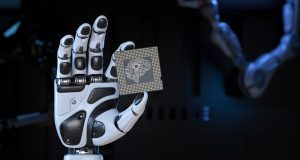At the annual GPU Technology Conference (GTC) 2025 in San Jose, California, Nvidia’s CEO Jensen Huang introduced a series of groundbreaking advancements in artificial intelligence (AI) hardware. The key announcements included the unveiling of the Blackwell Ultra GPU and the upcoming Vera Rubin platform, highlighting Nvidia’s commitment to driving AI innovation.
Blackwell Ultra: Elevating AI Performance
The Blackwell Ultra GPU represents a significant evolution of Nvidia’s Blackwell architecture. Designed to enhance AI model training and inference, Blackwell Ultra delivers a 40-fold performance increase over its predecessor, the Hopper architecture. This substantial boost enables more efficient and scalable AI applications. Huang announced that systems incorporating Blackwell Ultra are expected to be available in the second half of this year.
Looking ahead, Nvidia introduced the Vera Rubin platform, named in honor of the renowned astronomer Vera Rubin. This next-generation architecture is scheduled for release in the second half of 2026. The Vera Rubin platform aims to deliver significant performance gains and efficiency improvements in AI data centers, reflecting Nvidia’s strategy of annual advancements in AI infrastructure.
In addition to new GPUs, Huang highlighted developments in AI infrastructure, including the integration of photonics and AI-optimized storage solutions. These innovations are set to revolutionize the industry by enhancing scalability, efficiency, and energy consumption in large-scale data centers. The focus on advanced networking and storage solutions aligns with the increasing demands of AI workloads.
Huang also addressed the rapidly evolving field of physical AI, particularly in industrial and robotics applications. He described this sector as a $50 trillion opportunity, with AI-powered robotics set to transform industries such as manufacturing, logistics, and healthcare. Nvidia’s Isaac and Cosmos platforms lead this transformation, providing tools and frameworks for developing sophisticated robotic systems.
Nvidia’s announcements at GTC 2025 reflect a strategic vision aimed at maintaining leadership in the AI hardware sector.By committing to an annual rhythm of AI infrastructure build-out, including the introduction of new GPUs and CPUs, Nvidia seeks to meet the rapidly evolving needs of AI applications. This approach not only addresses current computational demands but also anticipates future challenges in AI scalability and efficiency.
The unveiling of the Blackwell Ultra GPU and the forthcoming Vera Rubin platform at GTC 2025 marks a significant milestone in AI hardware development. Nvidia’s focus on enhancing performance, integrating advanced technologies, and expanding into physical AI applications underscores its commitment to driving innovation in the AI industry. These advancements are poised to have a profound impact on various sectors, enabling more efficient, scalable, and transformative AI solutions.



